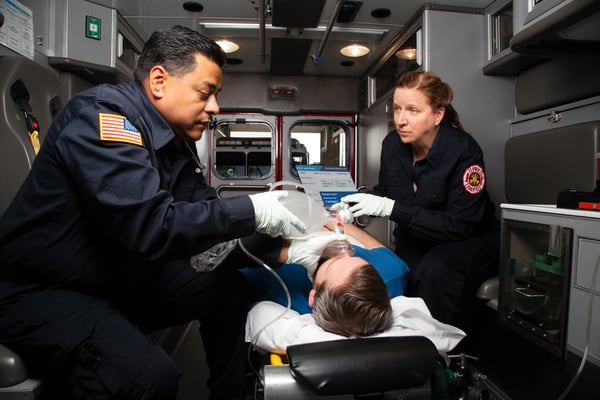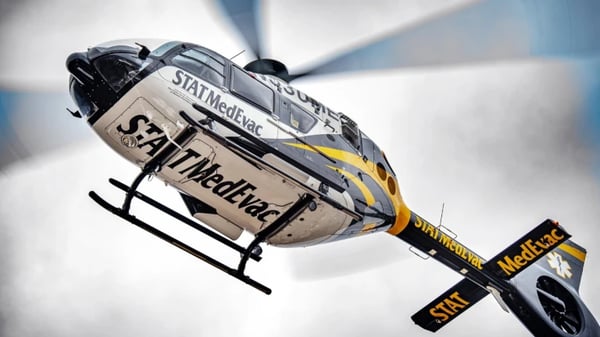News Alert: New ePCR Integration Simplifies EMS Data Management and Enables Better Care Coordination
ICD-10 Documentation Training: What is Different & Why Does it Matter to Me?
ICD-9 codes (and soon ICD-10 codes) are used to describe diseases, signs and symptoms, abnormal findings, complaints, social circumstances, and external causes of injury or diseases
Was this information valuable?

ICD-9 codes (and soon ICD-10 codes) are used to describe diseases, signs and symptoms, abnormal findings, complaints, social circumstances, and external causes of injury or diseases. All insurance carriers use ICD-9 (and soon ICD-10) codes to write medical policy and determine whether or not a claim is payable.
Billing staff use the PCR (Patient Care Report) to determine what ICD-9 or ICD-10 codes to report on a claim. There is a small set of codes and condition codes used for EMS billing, as compared to physicians. Once the ICD-10 transition is complete, the specificity of crew documentation will be of utmost importance when the billing staff is preparing to code a claim.
This transition will be difficult for billers and clinicians alike. When the billing staff is selecting a code to report an injury to the elbow, forearm or wrist, there is one code they are likely to use now. On October 1, 2015, they have many more specific choices to make.
ICD-9 Code:
959.9 – Unspecified injury of elbow, forearm and wrist
ICD-10 Codes:
S59.809A - Other specified injuries of unspecified elbow, initial encounter
S59.819A - Other specified injuries unspecified forearm, initial encounter
S59.909A - Unspecified injury of unspecified elbow, initial encounter
S59.919A - Unspecified injury of unspecified forearm, initial encounter
S69.80XA - Other specified injuries of unspecified wrist, hand and finger(s), initial encounter
S69.90XA - Unspecified injury of unspecified wrist, hand and finger(s), initial encounter
Let’s take a closer look at those last two codes. The X is the place holder in a code set. This allows the billing staff to assign a code for the injury to a high level of specificity (left hand, left ring finger, severe injury). If there are multiple fingers involved, the billing staff could have dozens of codes to choose from. If the documentation is not specific, coding this injury becomes virtually impossible – and unbillable.
Next to patient care, good documentation is one of the most important parts of a clinician’s job. Most EMS providers don’t fully appreciate the many uses for their documentation. A greater appreciation of the importance of accurate and complete documentation comes from a better understanding of its uses and applications in critical areas of an organization’s overall operations: Clinical, Reimbursement & Compliance.
Clinical: Let the Record Reflect!
First and foremost, documentation serves a vital clinical purpose. A copy of the PCR is given to the receiving facility for continuity of care. It communicates to the provider what treatment the patient has received. The PCR should accurately and adequately document the care provided to the patient while in your care. It becomes part of the patient’s medical record here and at the receiving facility. In the digital age, that record likely follows the patient everywhere they go. A complete and accurate record is important.
Reimbursement: Show Me the Money!
Documentation plays a vital role in reimbursement. If your organization is plagued with poor documentation, it could be in poor health and not even realize it. An organization’s overall financial health can be quickly determined with a quick set of vital signs, just like your patients. Take a quick look at the profit margins. Is your company profitable? What financial condition is your company in, Good, Fair, Stable, Serious or Critical? If there are no margins, there is no mission. It’s really that simple. Your organization’s survival depends on its ability to secure reimbursement.
Compliance: We're Watching You!
Compliance is one of the most important elements of the billing process. There are regulations that dictate what elements are required before a claim can be billed. The billing staff must review the documentation and determine if what is contained in the record meets the state and federal regulations before a bill can be rendered to an insurance carrier. Aside from the PCR, there are other requirements: PCS forms, ABN forms, signatures and surrogate signatures.
Before a claim can be coded and filed to insurance, the billing staff must determine if the PCR is complete and accurate. If not, it must be returned for addenda or additional clarification. An intubated patient who has been administered paralytics and sedatives should not have a GCS of 15.
Here are some tips for documentation of Emergency Transports:
How were you dispatched?
What were you dispatched for?
What did you find once on scene?
What were the events leading up to the injury/illness?
Why does the patient require an ambulance? Is transport by other means contraindicated, why?
What interventions during transport?
Why transported to receiving facility? What specific service required?
If not the closest appropriate facility, why? Is there an ABN on file?
Here are some tips for documentation of Non-Emergency Transports:
What were you dispatched for?
What did you find once on scene?
Why does the patient require an ambulance? Is transport by other means contraindicated, why?
What interventions during transport?
Why transported to receiving facility? What specific service required?
Is the patient bed-confined?
Is there any pertinent medical history?
Was the patient transported to the closest appropriate facility? If not, why? Is there an ABN on file?
Is there a completed PCS?
Things that should never be in your documentation:
-
Never make assumptions (i.e. never document patient is intoxicated. Stick with observations, such as patient smells of ETOH)
-
Never assume an injury is self-inflicted (unless the patient tells you). Even if the patient tells you it’s a self-inflicted injury, it does not serve a vital clinical purpose, diminish the patient condition or change the way you treat your patient. However, it may block the ability to be paid when documented
-
Never document a diagnosis unless that patient has been diagnosed by a physician (i.e. do not list primary impression as MI, CVA, fracture, etc. in the field)
-
Never use unapproved abbreviations (NSG, TMB, UTS, PUTS, etc.)
-
Misspelled words – use your spell check
-
Never sign the consent form for your patient
-
Never alter the PCS form in any way, shape, form or fashion
The most important part of a PCR is the narrative. This section contains the information billers (and claims processors) can wrap their minds around and really understand. Narratives should outline how and why the crew was dispatched, contain how the patient was found, any pertinent negatives, describe the scene and outline the events leading up to the time they arrived.
Remember, without proper documentation and the ability to secure reimbursement, your organization may not survive the ICD-10 transition. Engage your billing, clinical and education staff to come together and make changes now to help ease the pain of this transition.
Check your organization’s vital signs regularly and know when to seek outside help.
Related Posts
4 Must-have Data Points for Dispatch-Billing Alignment and Maximum Reimbursement
How STAT MedEvac Connected Device, Software, and Data Technology To Enhance QA and Elevate Care
ZOLL Pulse Blog
Subscribe to our blog and receive quality content that makes your job as an EMS & fire, hospital, or AR professional easier.
ZOLL Pulse Blog
Subscribe to our blog and receive quality content that makes your job as an EMS, fire, hospital, or AR professional easier.




